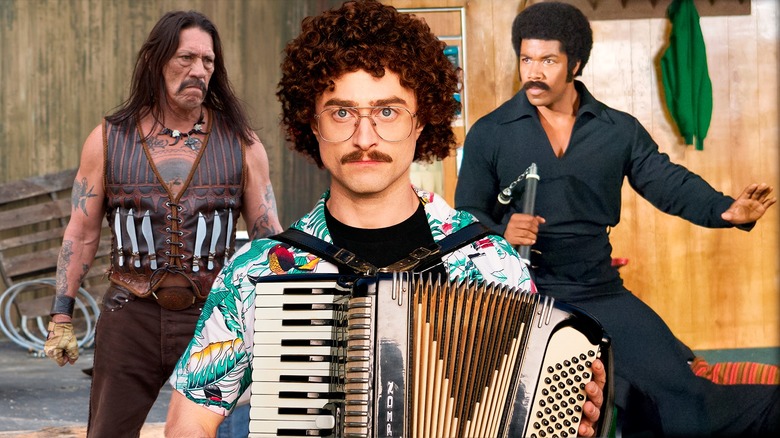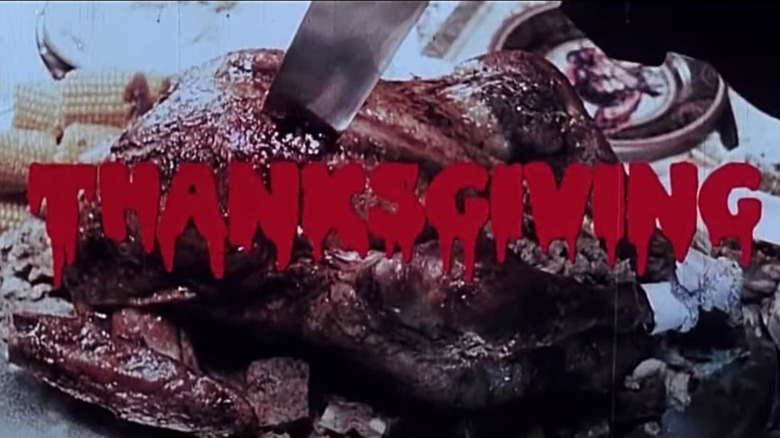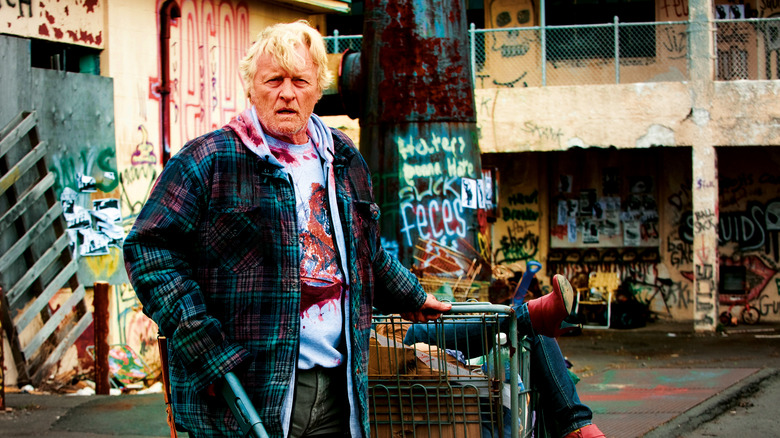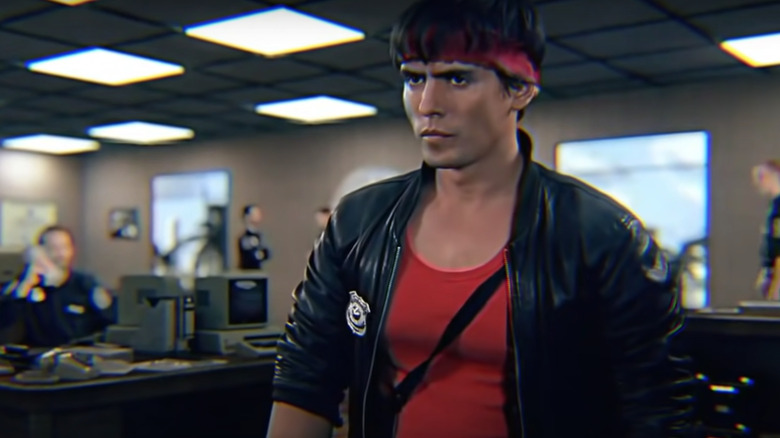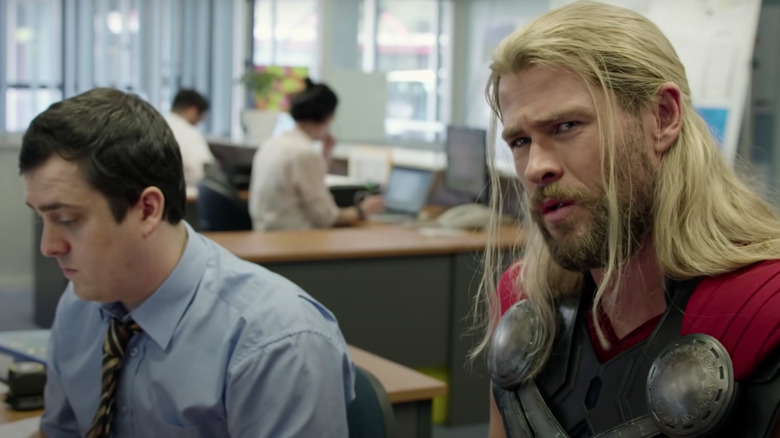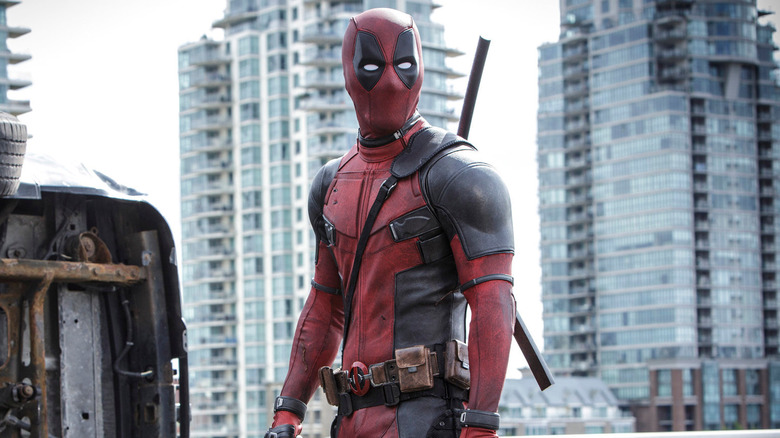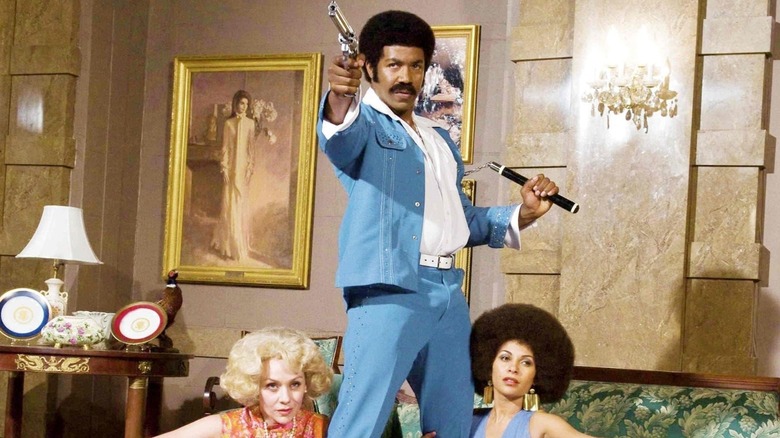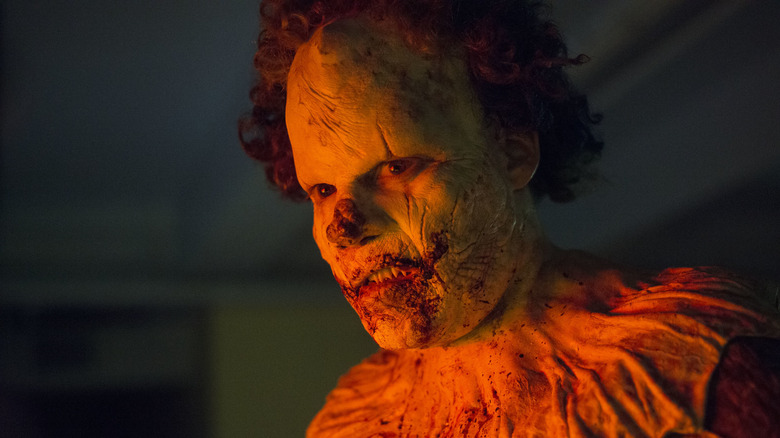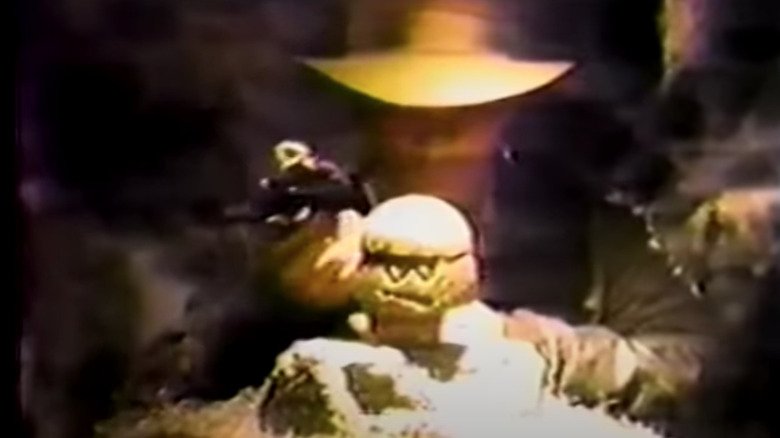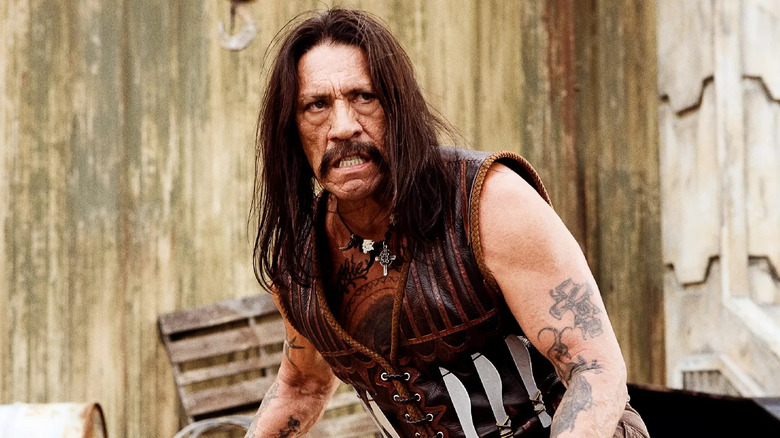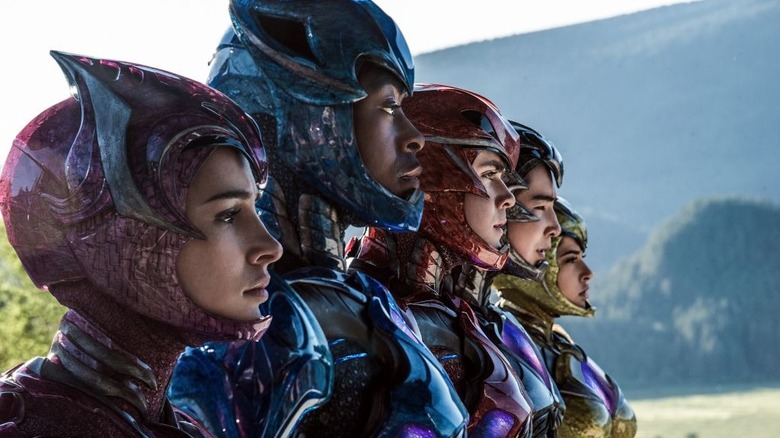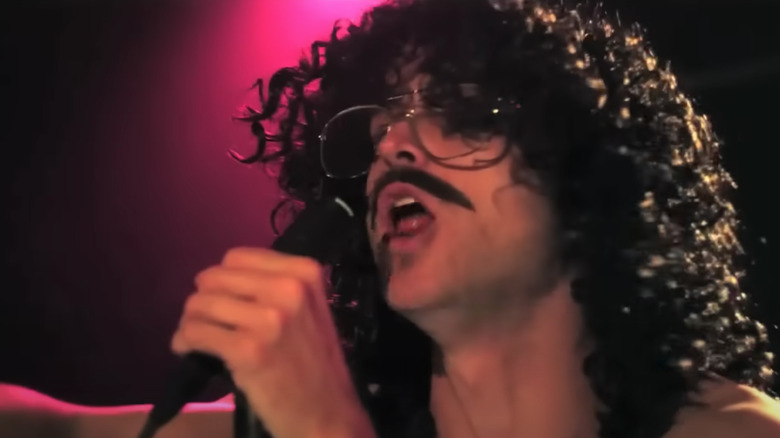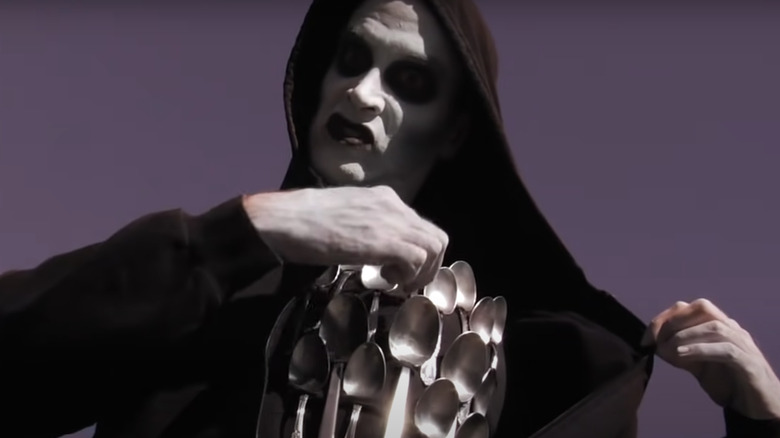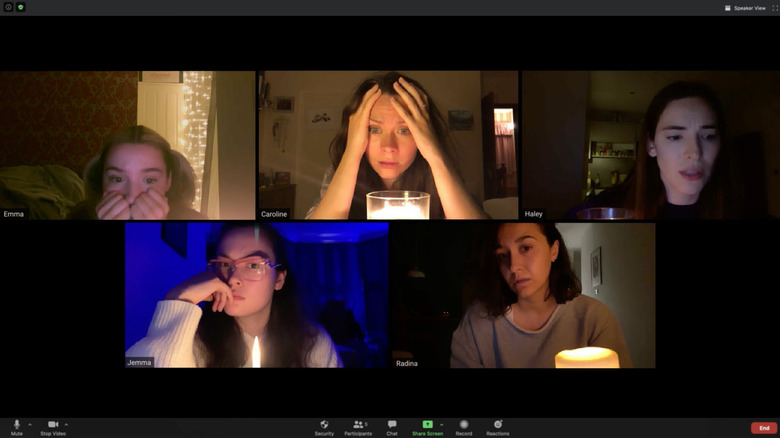13 Movies That Started Out As Fake Trailers Or Videos
The most common production pipelines are to progress either from an original screenplay to a film or from book to screenplay to film. Sometimes a short film or proof of concept is made as an intermediary step before the feature-length version is made. One less common — but still valid — production route is to kick off the process with a fake trailer or another type of web video before the feature film equivalent is ready to go.
These types of fake trailers and videos most commonly start out as self-contained over-the-top parodies with no real intention of becoming something larger until later on, with some exceptions. Other times, a potential feature film may be facing trouble with a studio, and a video sneakily hitting the internet can be a way to drum up interest and prove to the money people that an audience is out there. The best case scenario with these types of videos is that they go viral and amass a large built-in audience for the future feature-length iteration. This pre-established audience can then be counted on for ticket sales or even as a source for crowdfunding the larger version of the fake trailer or video. Here are 13 movies that successfully took this atypical production pipeline.
Thanksgiving
Back in 2007, directors Robert Rodriguez and Quentin Tarantino released "Planet Terror" and "Death Proof" as a combined double feature. Together, these two exploitation film throwbacks formed the "Grindhouse" movie. The combo package came complete with fake theater bumpers, ads, and most importantly trailers. There were four official fake trailers in total made by Rodriguez, Rob Zombie, Edgar Wright, and Eli Roth.
Roth's contribution was "Thanksgiving," a trailer for a fake slasher film about a pilgrim hacking people up and turning them into a grotesque Thanksgiving dinner. The trailer is a parody of slashers in general and holiday-themed slashers like "Halloween" in particular with the opening shot of the trailer mimicking the iconic opening shot of John Carpenter's 1978 horror classic.
More than a decade-and-a-half later, Roth is returning to the premise and turning "Thanksgiving" into a feature-length horror film, which will presumably retain the comedic edge of the trailer, though that could end up changing. The film is currently shooting in Canada with popular TikToker Addison Rae heading up the cast. Roth himself played a role in the fake trailer in which he was decapitated by the slasher villain, but it remains to be seen if he will carry his cameo role over into the feature-length expansion.
Hobo with a Shotgun
As part of the promotion for "Grindhouse," director Robert Rodriguez held a "Grindhouse" trailer competition in conjunction with the SXSW Film Festival. Indie filmmakers were tasked with creating original fake trailers in the spirit of the fictional exploitation film trailers made by the big name directors of "Grindhouse." The winner of the competition was chosen by Rodriguez and presented by him at the festival.
The winning submission was "Hobo with a Shotgun" from Canadian filmmaker Jason Eisner. While the trailer wasn't included in the U.S. release of "Grindhouse," it did accompany the film for theatrical screenings across Canada.
Eisner was young and had only made a couple of short films before creating his fake trailer. He used the buzz from the trailer's success to turn the two-minute parody trailer into a feature film, which was released four years later in 2011, with Rutger Hauer starring as the titular shotgun-wielding homeless person. Eisner used his newfound success to pay it forward to other filmmakers on the come up. He held his own version of the "Grindhouse" trailer competition in 2011, with the winner getting included in the physical media release of the "Hobo with a Shotgun" feature film. The winner of Eisner's fake trailer competition was "Van Gore" by filmmakers Keith Hodder and Peter Strauss.
Kung Fury
"Kung Fury" first took the internet by storm in 2013 as a two-minute trailer from filmmaker David Sandberg — who is not to be confused with filmmaker David F. Sandberg, who went viral the same year with his horror short "Lights Out," which was later expanded into a feature film as well. "Kung Fury" is a hyper-stylized '80s action homage in which a renegade cop travels back in time to kill Hitler aka the Kung Führer.
The trailer was released in conjunction with a Kickstarter campaign to raise funds in order to turn the fake trailer into a real movie. The campaign was launched with an initial goal of $200,000, but the support of fans who loved the trailer blew all expectations out of the water. The project wound up raising more than triple its goal with $630,000 crowdfunded.
A couple of years later, the crowdfunded longer version of "Kung Fury" was released for free on YouTube and racked up a staggering 38 million views. The film was only about half an hour long, but plans for a feature-length continuation have been in the works since the original crowdfunding campaign was still running.
The larger "Kung Fury 2" is a feature-length continuation of the story and has been in the works for quite some time. The sequel features bigger names like Michael Fassbender and Arnold Schwarzenegger and was formerly slated for a 2022 release, but delays have pushed it back.
Team Thor
Chris Hemsworth had played Thor in the MCU four times already by the time the "Team Thor" short was released. Fans were more than familiar with Hemsworth in the role by 2016, but "Team Thor" managed to show a new side of Hemsworth and the character.
Released during Comic-Con in 2016, "Team Thor" was three-and-a-half minutes long and took the form of a video diary showing how Thor spends his downtime when not busy saving the world. There had been plenty of fish-out-of-water humor in his prior standalone films, but "Team Thor" ramped the comedy way up and allowed Hemsworth to flex his comedic chops in a different way while significantly switching up the character's personality from serious to goofy. More "Team Thor" shorts would follow and the character's next standalone film, "Thor: Ragnarok," would stick with this new personality and comedy style.
Both of these "Thor" projects were made by Taika Waititi, who had previously only worked on smaller indie films. "Team Thor" helped prove that a new direction and style was viable for the character and also showcased the comedic chemistry between Hemsworth and Mark Ruffalo as Bruce Banner, who would end up becoming something of a buddy duo in "Thor Ragnarok." This change in style helped turn Thor's next standalone film into one of the highest-rated movies of the entire MCU while his previous standalone movies landed near the bottom of the franchise. Waititi returned to the character again in 2022 with "Thor: Love and Thunder."
Deadpool
"Deadpool" and "Deadpool 2" collectively grossed over $1.5 billion at the worldwide box office, but the character's first big-screen outing nearly didn't get made. It's hard to imagine today, but 20th Century Fox didn't think "Deadpool" would be successful and passed on it at first.
Director Tim Miller had a background in VFX as the founder of Blur. He decided to create a fully CGI test short to use as a proof of concept for "Deadpool" when pitching to Fox, but the studio wasn't convinced. For a time, the project was dead. Then, the CGI test, which already featured the voice of Ryan Reynolds, leaked online and created such a buzz for the potential feature that the executives at 20th Century Fox were forced to reconsider their stance.
Miller credits the test short leaking online with giving him the opportunity to direct the feature film himself. He had only directed a pair of shorts more than a decade earlier before "Deadpool" and had spent most of his career focusing solely on VFX for movies and video game cinematics. The sequence showcased in the test short would end up being remade and altered when it became the opening action sequence of the feature film, now blending live-action footage with glossier CGI.
Black Dynamite
"Black Dynamite" only had a limited theatrical release and might not have set the world on fire, but it built up a dedicated fanbase over time and led to an Adult Swim animated spin-off a couple of years later. "Black Dynamite" is a stylistic homage to the Blaxploitation films of the '70s. The setting jumps from mean streets to secret laboratories to the White House, and the plot progresses from drug dealing to zesty kung fu treachery to an evil government plot to shrink genitalia. This over-the-top comedy is absolutely hilarious, with much of its success being owed to its star Michael Jai White, who co-wrote the script.
In an interview with 247HH, director and co-writer Scott Sanders explained that the concept for the main character came straight from White. Before there was any inkling of a feature film, White had taken a photo of him in character as Black Dynamite. Sanders explained, "He had the gun, the afro, the nunchucks, the mustache, and that exact same suit." Together, Sanders and White made a fake trailer that mixed footage of White as Black Dynamite interspersed with archival footage of actual Blaxploitation films from the 1970s. Sanders got that fake trailer in front of a producer, who used it to raise the small budget necessary to turn it into a real movie.
Clown
As odd as it sounds, the upcoming feature-length version of "Thanksgiving" is not the first time Eli Roth has turned a fake trailer into a real movie. "Clown" started out a roughly one-minute-long fake trailer for a horror movie about a man who is permanently transformed into a clown in the way someone might be transformed into a werewolf. The trailer was made in 2010 by filmmaker Jon Watts, who would eventually become the director of the new MCU "Spider-Man" movies.
The fake trailer came complete with real studio logos even though they had nothing to do with it, and the trailer suggested that the fake movie was directed by Eli Roth, rather than Watts, the actual director. It also included other notable names like Quentin Tarantino and "Hostel" producer Boaz Yakin. At the fake-trailer stage, Roth had nothing to do with the project and his name being used as a part of the joke. The fake trailer bearing his name got in front of the real Roth, who liked it so much that he encouraged Watts to turn it into an actual feature film and jumped on board as a producer. The trailer treated the premise as a parody, but the feature film that followed four years later leaned less into comedy and instead attempted to land as a genuinely frightening horror film to its detriment.
Raiders of the Lost Ark: The Adaptation
"Raiders of the Lost Ark: The Adaptation" is a unique beast. After Steven Spielberg released "Raiders of the Lost Ark" in 1981, two children became such big fans of it that they set about creating their own extremely faithful recreation of the film. Eric Zala, Chris Strompolos, and couple of their friends began working on their adaptation in 1982 with no money and when they were just 12 years old. It is worth noting that they began working on their remake more than a year before "Raiders of the Lost Ark" was released on VHS, which meant creating such a faithful adaptation was even more challenging. They spent the next seven years working on their remake and made impressive progress by showcasing unbridled passion and ingenuity, but the project was left unfinished as Zala and Strompolos entered adulthood.
The unfinished video wound up getting in front of Steven Spielberg, who gave the project his blessing. Decades later, the childhood friends returned to their passion project and finished it. After a total of 35 years, they managed to recreate the entirety of "Raiders of the Lost Ark" on a shot-by-shot basis. The full process was chronicled in the documentary "Raiders!: The Story of the Greatest Fan Film Ever Made."
Machete
Long before Eli Roth made the decision to turn his fake "Thanksgiving" trailer into a real movie, one of the other fake trailers produced for the "Grindhouse" double feature was blown up into a real movie first. Robert Rodriguez wasted no time diving back into the "Grindhouse" world and turning his fake trailer for "Machete" into a full action film in the same over-the-top style.
A lot of the footage from the fake trailer wound up being used in the feature-length expansion, but some moments were altered and some roles were replaced with different actors. Danny Trejo, Cheech Marin, and Jeff Fahey were involved from the get-go in the fake trailer, but Jessica Alba, Michelle Rodriguez, Steven Seagal, and Robert De Niro all came later on in the feature. Shea Whigham took over the role played by Steve Joyner in the trailer, who wasn't really an actor and usually served as Rodriguez's production designer and property master. Lindsay Lohan also took over a role from an uncredited actress in the trailer, but footage of the original actress still made its way into the feature-length version in comedic fashion.
Rodriguez followed up this ridiculous action film with the sequel "Machete Kills" three years later. In another fake trailer, Rodriguez teased a third entry to round out the trilogy titled "Machete Kills in Space." He has said that he never intended to take this third movie beyond the fake trailer stage.
Power Rangers
The numerous Japanese and English TV shows, assorted movies and straight-to-video spin-offs, and Hasbro toy line that comprise the "Power Rangers" franchise were all kid-friendly for decades. Then the franchise got a major and unlicensed tonal shakeup in 2015 when the 14-minute-long "Power/Rangers" was released on YouTube.
The short was far darker and grittier than any of the official "Power Rangers" properties and was made as an unauthorized fan film as part of Adi Shankar's Bootleg Universe. Shankar, a Hollywood producer behind movies like "The Grey" and "Lone Survivor," was a huge fan of "Power Rangers" as a child. But he realized the concept essentially equated to the rangers being enlisted as child soldiers, which befit a darker, more violent tone. Shankar was adamant that the bootleg short wasn't any kind of pitch, but its influence on the future of the "Power Rangers" franchise is impossible to miss.
Shortly after the Shankar-produced "Power/Rangers" went viral with 25 million views, an official "Power Rangers" reboot went into production. While it wasn't a direct expansion of the short or quite as violent, the reboot carried over the darker, grittier tone of the viral short. For the first time in the history of the official franchise, the 2017 "Power Rangers" was rated PG-13 instead of aiming for child audiences. Shankar and director Joseph Kahn didn't work on the reboot, but many members of the SPFX and stunt teams were shared between the two projects, while actor Jason Tremblay (father of child actor Jacob Tremblay) played a police officer in both versions.
Weird: The Al Yankovic Story
"Weird: The Al Yankovic Story" was released as a Roku original in 2022. Rather than serving as a factual biopic of the titular parody musician's life, the film itself is a parody of biopics in general. The plot is a total farce, and the intentionally ill-fitting casting choice of Daniel Radcliffe as Yankovic is just the first of many indicators that nothing in the movie is meant to be taken seriously.
A full 12 years before Roku ponied up the dough to make it a feature film, "Weird: The Al Yankovic Story" first hit the internet as a fake trailer made for Funny Or Die. Just like the feature film, the fake trailer was made by Eric Appel and was packed with celebrity cameos. Weird Al himself plays a record producer in both versions, while the rest of the cast was either swapped out or changed roles. Before Radcliffe played Yankovic, Aaron Paul of "Breaking Bad" fame played him in the trailer.
The storyline of the feature film remained remarkably faithful to the 12-year-old trailer when it finally came to fruition. Both versions feature Yankovic's fictional battle with addiction, both depict his anti-accordion father having a change of heart, both present a torrid love affair between Yankovic and Madonna (played by Olivia Wilde in the trailer and Evan Rachel Wood in the feature) and both include Dr. Demento as a major character (played by Patton Oswalt in the trailer and Rainn Wilson in the feature).
The Horribly Slow Murderer with the Extremely Inefficient Weapon
"The Horribly Slow Murderer with the Extremely Inefficient Weapon" was released on YouTube all the way back in 2009. Since then it has racked up over 37 million views. The video is presented as a long-form trailer for a horror movie, about a man being ever so slowly beaten to death with a spoon over the course of several years by an evil spirit. The short was made by filmmaker Richard Gale, who made plans to turn the fake trailer into a full movie. The title of the feature would be "Ginosaji: The Horribly Slow Murderer with the Extremely Inefficient Weapon," with Ginosaji being the name of the demon as revealed in the trailer and also the Japanese word for "silver spoon."
The fake trailer joked that the movie was over 12 years in the making, and that turned out to be an underestimation. Though the feature has yet to come out all these years later, it is still in the works. Gale ran a Kickstarter campaign for the movie and brought in over 150% of his goal. The campaign was launched all the way back in 2015, but Gale has continued to keep his backers in the loop over the years, with the latest update arriving as recently as January 2023. The official "Ginosaji" website explains that the production was placed on hold due to the COVID-19 pandemic, but progress has resumed according to the Kickstarter updates.
Host
After movies like "Unfriended" showed how not to execute a face-time online horror film, "Host" proved that it was possible to use the format to find overwhelming critical success. In the age of the pandemic, a movie like this made perfect sense as productions were scaling back and casts and crews needed to find new ways of collaborating.
"Host" was directed and co-written by Rob Savage, who had worked mostly in television and horror shorts prior. Shortly before making "Host," Savage first played around with face-time calls as a medium for an internet prank. Savage rounded up a bunch of his unsuspecting friends on Zoom and gave them a taste of real found footage by climbing into his attic live on the call, where a demon child was waiting to scare them. This first face-time experiment was just two minutes long, but the results convinced Savage that the medium could work for a longer horror film. He made and released "Host" as a Shudder original later that same year.
